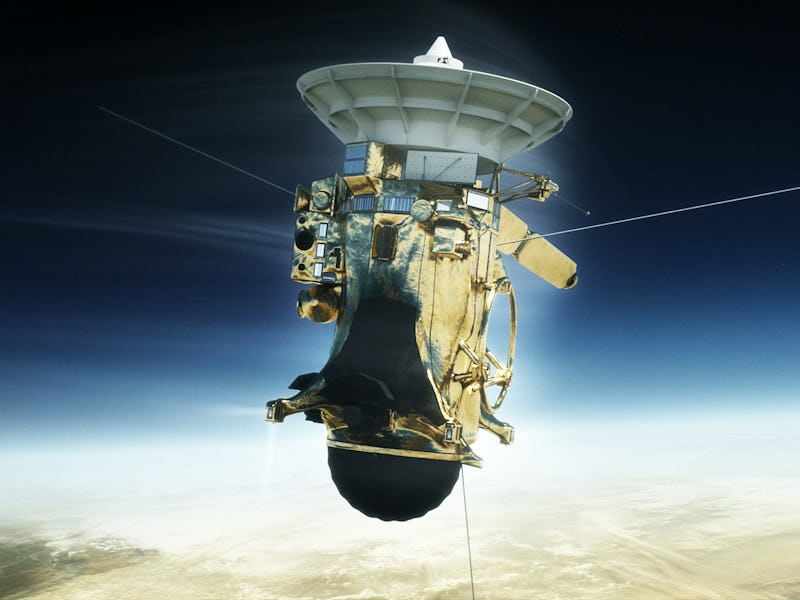5 Stunning Visuals That Explain Cassini's Final Days
Cassini will not go gentle into that gas giant.

NASA’s Cassini probe has orbited Saturn since 2004, but it will take the final plunge into the heart of the gas giant on September 15. During its operating life, the data Cassini has transmitted back to scientists on Earth have yielded over 4,000 academic papers that have transformed our understanding of Saturn and its moons, especially Enceladus and Titan.
In a teleconference on Tuesday, Cassini program scientist Curt Niebur, project manager Earl Maize, and project scientist Linda Spilker looked back on the probe’s accomplishments and previewed its final days.
Starting in April, Cassini began its Grand Finale phase. During that time it has performed a sequence of risky dives between the planet and its rings. This phase has yielded stunning images of Saturn, and it will use its final days of operation to transmit atmospheric data back to scientists on Earth.
Here’s what’s going to happen during Cassini’s final two weeks in operation, and why it matters.
Cassini’s Grand Finale Orbits
Every 6.5 days since the end of April, Cassini has performed a dive between Saturn and its rings. On its final half orbit, Cassini will pass by Saturn’s largest moon, Titan. During this flyby, Titan’s gravity will augment Cassini’s course, sending it on its final dive into the planet.
A Variety of Distances
Throughout its series of weekly Grand Finale orbits, Cassini has passed between 37,300 miles and 40,100 miles from Saturn. As the orbiter approaches its great plunge into the gas giant, its dives dip lower and lower into the atmosphere. Cassini’s five approaches leading up to its final one are “like dipping our toe in Saturn’s atmosphere, in preparation for the final plunge,” Spilker told reporters on Tuesday.
These dips have allowed scientists to gather data on the planet’s atmospheric composition, which they say will allow them to get a better idea of gas ratios and seasonal changes on Saturn than more distant flybys have.
Cassini’s Final Plunge
The space probe’s final descent into Saturn will start on September 11, when it passes by Titan. This approach will nudge Cassini’s orbit enough to initiate its descent into the planet. On September 14, the probe will take its final images of Saturn and send all of its recorded data back to Earth. About 11 hours later, it will switch to a real-time transmission mode. In this state, it will send data from an array of instruments back to Earth for about three hours until it loses signal inside the planet and burns up.
Cassini’s Instruments
Cassini’s Grand Finale is no passive death for the probe. Cassini is loaded with instruments that will measure and transmit atmospheric data until the last possible second. These measurements will give scientists greater precision than they’ve had, which leads some of them to suspect that Cassini’s plunge could yield the best science of the whole mission.
“By having in-situ sampling of the atmosphere, we can directly measure things like the hydrogen-to-helium ratio,” said Spilker. This could give scientists a more complete picture of how the planet formed.
Final Images
As Cassini dives into Saturn, it will transmit its final images to Earth, focusing in on the features of the rings.
“The last photo will be of the propellers in the Saturn system,” said Spilker. These structures in Saturns rings — which can be seen in the bottom center of the above image — are thousands of miles long. They’re gaps created by moonlets, which are smaller than Saturn’s moons but larger than the ring particles. These objects generally don’t last long, and they were first discovered by Cassini’s observations.
In the probe’s final days, Cassini is still earning its keep. It’s safe to say that scientists with access to NASA’s Cassini data will continue learning about Saturn even after the probe’s final farewell.